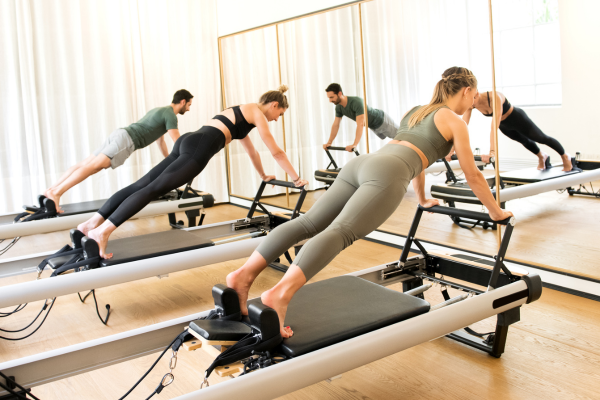Our pelvic floor plays an important role in pelvic organ support, conscious control of our bladder and bowels, and sexual function, yet we often don’t consider supporting it when we exercise.
The Pelvic Floor is made up of both a group of muscles and elastic type tissue called fascia. Together, the muscles and fascia span from the tail bone at the back of the pelvis through to the pubic bone at the front and side to side between our sit bones.
Regular exercises that we often do during personal training, exercise classes or app based exercise programs can put too much pressure on the elastic connective tissue and can cause pelvic floor dysfunction. Symptoms may include such as urinary incontinence, pelvic organ prolapse and pain.
Safe Switches
Women often ask, “What is a safe exercise I can do instead of …” therefore here is a list of great alternatives.
These exercises may be lower impact than their alternative however they’re not lower intensity! Using good, slow technique, ensures you will engage your larger muscle groups more effectively.
STEP UPS – instead of box jumps
A straight forward switch.
Alternating the leading leg, stepping up onto a step of your preference.
You can either bring your other leg up to be fully standing on the step, or alternatively use your following leg to tap the step and then return to your starting position.
Progressions: can include a higher step, speed of step ups or the number of repetitions
INCH WORMS – instead of a burpee
No one actually likes a burpee, right?
An inch worm is a more desirable alternative, with less dizziness also!
Start standing with feet evenly apart. Bending your knees into a squat position, place your hands on the floor and walk them forward to be in a front support / plank position.
To return to standing, maintain a straight back, bend your knees and walk your hands back towards your feet. Return to standing. Simple, yet very effective.
Progressions: can include a push up or a hold in the plank position.
TOE TAPS – instead of a sit up
If done correctly, a crunch doesn’t increase the pressure through the pelvic floor, however a full sit up can cause symptoms for some people. Therefore a toe tap is a nice alternative.
The starting position: Lying on your back, bringing knees into a table top position (foot off the floor) one leg at a time. It is important to maintain a strong position with your lower back, keeping it gently flush with the floor.
From here, simply alternate lowering one foot down at a time to tap the floor, then returning it to the starting position. This movement should be slow and controlled with regular breathing throughout.
Progression: extending the leg to 45deg or completing both legs at once.
SQUAT LIFT – instead of star jumps / jumping jacks / skipping
The good old jumping jack is feared by many. And often for good reason. It can be just too much on the pelvic floor!
A squat lift can achieve the same leg burn and get your heart pumping at the same time!
Starting with your feet evenly apart, bend your knees and lower into a squat (bottom back as if sitting on a chair), return to standing and finish with a heel raise. Repeat.
Progression: increase speed, time duration or repetitions.
More information
For more pelvic floor friendly exercise suggestions, check out the Continence Foundation of Australia’s information at pelvicfloorfirst.com.au
Pelvic floor dysfunction is common yet it isn’t normal.
Bladder leakage, urgency (running to the toilet for fear of leakage), pelvic organ prolapse or pelvic pain are all symptoms of pelvic floor dysfunction and can be managed very successfully with the help of a Pelvic Health Physiotherapist.
If you would like more information or to book an appointment, please contact us on (03) 5571 9923 or book online (here)


